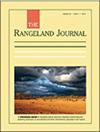历史、当前和未来情景下潜在自然植被对全球气候变化的变化
IF 0.9
4区 环境科学与生态学
Q4 ECOLOGY
引用次数: 1
摘要
潜在自然植被(PNV)是植被的最后演替阶段,在生态恢复、自然保护区设计和农牧业生产发展中起着关键作用。利用末次间冰期(LIG)、末次盛冰期(LGM)、全新世中期(MH)和现代(PD)等历史和当前时期的气象资料,以及2050年和2070年的衍生资料,结合CSCS模式对全球PNV进行了分类。为了便于分析全球PNV的空间变化,将42类PNV重新划分为10类。最后,分析了全球PNV的时空格局、演替过程以及对气候变化的响应。我们的研究得出了以下五个结论。(1)全球PNV在LIG、MH、2050和2070年仅缺失1个类别(IA1 -干旱-极寒沙漠、高山沙漠)。(2)寒干类群主要分布在高纬度和高纬度地区,温湿类群和热带过湿类群分别分布在中、低纬度地区。温带森林草原、温暖荒漠、热带稀树草原和热带森林草原增加,其他6个类群减少。(3)温带森林草原向冻土带转化面积最大,高寒草原向低寒草原转化面积最大,表明气候变化剧烈,陆地植被对气候变化敏感。(4) CSCS可用于模拟全球PNV的长期演替。(5)由于全球气候变暖,森林向纬度和海拔更高的北半球和西藏地区转移。移动距离越大的PNV类群反映出全球气候变化对植被的影响越严重。本文章由计算机程序翻译,如有差异,请以英文原文为准。
Shift of potential natural vegetation against global climate change under historical, current and future scenarios
Potential natural vegetation (PNV), the final successional stage of vegetation, plays a key role in ecological restoration, the design of nature reserves, and development of agriculture and livestock production. Meteorological data from historical and current periods including the last inter-glacial (LIG), last glacial maximum (LGM), mid Holocene (MH) periods and the present day (PD), plus derived data from 2050 and 2070, in conjunction with the Comprehensive and Sequential Classification System (CSCS) model, were used to classify global PNV. The 42 classes of global PNV were regrouped into 10 groups to facilitate analysis of spatial changes. Finally, spatio-temporal patterns and successional processes of global PNV as well as the response to climate changes were analysed. Our study made the following five conclusions. (1) Only one missing class (IA1 frigid-extrarid frigid desert, alpine desert) arose in periods of LIG, MH, 2050, and 2070 for global PNV. (2) The frigid-arid groups were mainly distributed in higher latitudes and elevations, but temperate-humid groups and tropical-perhumid groups occurred in middle and low latitudes, respectively. Temperate zonal forest steppe, warm desert, savanna and tropical zonal forest steppe increased, while six other groups decreased. (3) The conversion from temperate zonal forest steppe to tundra and alpine steppe from LIG to LGM occupied the largest area, indicating a drastic shift in climate and the associated response of terrestrial vegetation sensitive to climate change. (4) The CSCS could be used to simulate the long-term succession of global PNV. (5) As a consequence of global warming, forests shifted to the northern hemisphere and Tibet, areas with much higher latitude and elevation. The PNV groups with greater shift distance revealed the more serious effects of global climate change on vegetation.
求助全文
通过发布文献求助,成功后即可免费获取论文全文。
去求助
来源期刊

Rangeland Journal
环境科学-生态学
CiteScore
2.90
自引率
8.30%
发文量
14
审稿时长
>36 weeks
期刊介绍:
The Rangeland Journal publishes original work that makes a significant contribution to understanding the biophysical, social, cultural, economic, and policy influences affecting rangeland use and management throughout the world. Rangelands are defined broadly and include all those environments where natural ecological processes predominate, and where values and benefits are based primarily on natural resources.
Articles may present the results of original research, contributions to theory or new conclusions reached from the review of a topic. Their structure need not conform to that of standard scientific articles but writing style must be clear and concise. All material presented must be well documented, critically analysed and objectively presented. All papers are peer-reviewed.
The Rangeland Journal is published on behalf of the Australian Rangeland Society.
 求助内容:
求助内容: 应助结果提醒方式:
应助结果提醒方式:


